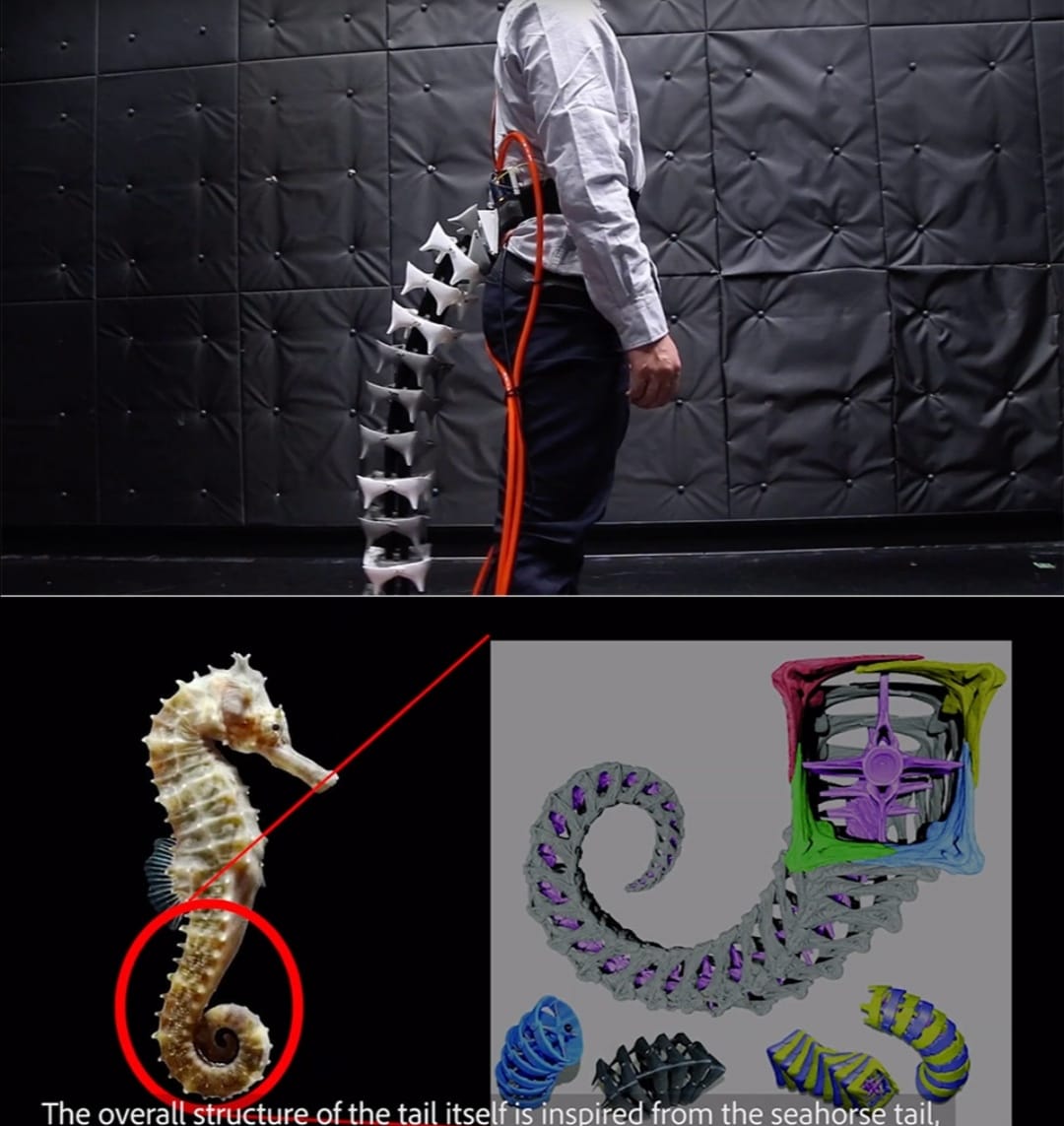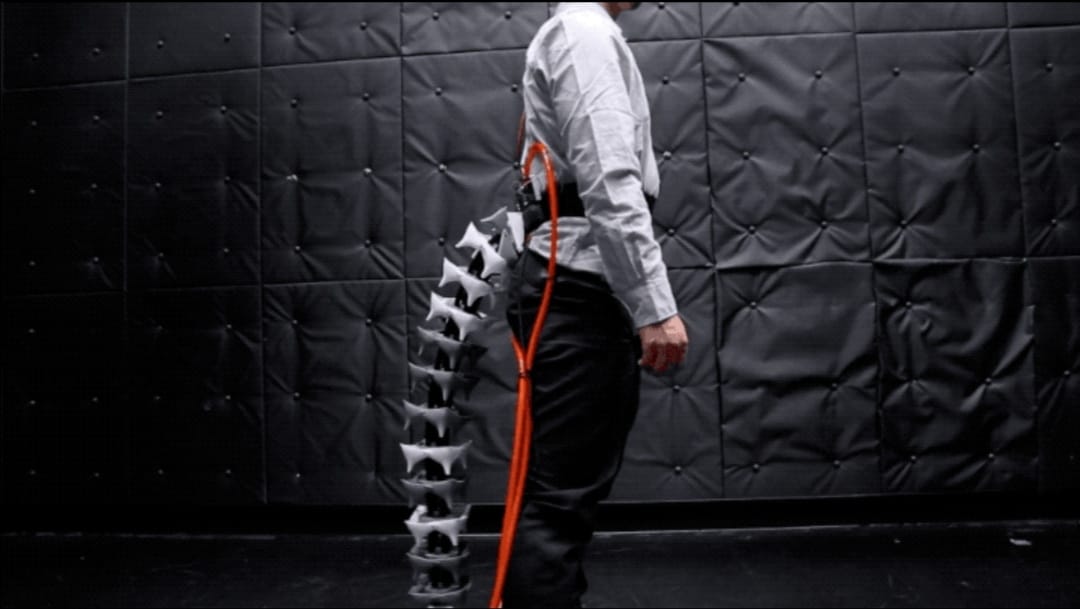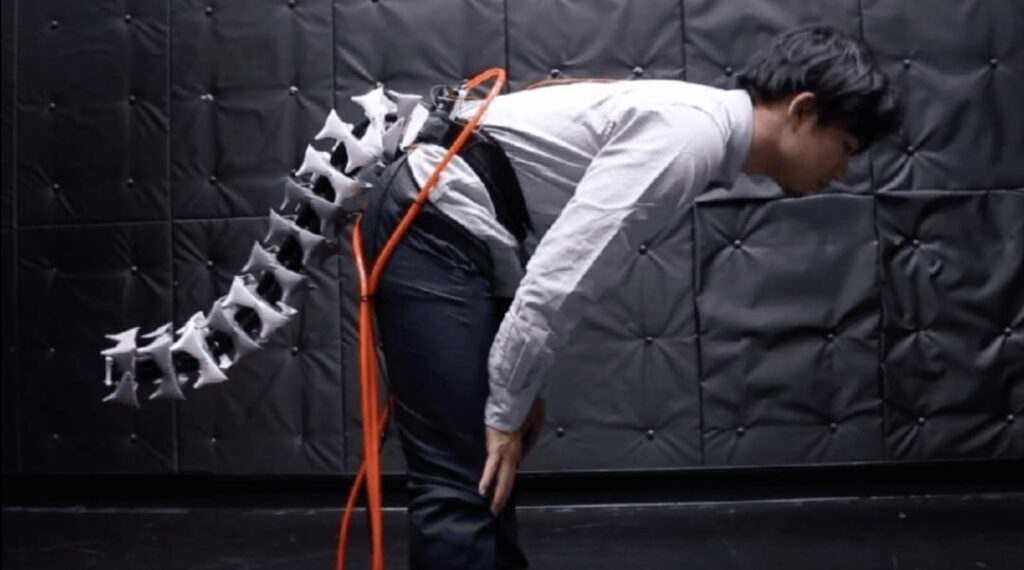In Japan, engineers are exploring a fascinating invention inspired by the animal kingdom — a robotic tail designed for humans. Known as Arque, this artificial tail mimics the natural balancing tool found in animals like cats and monkeys. Its purpose? To give humans better stability, especially when carrying heavy loads or moving in tricky environments.
The tail attaches to the waist and uses a system of weights and motors to shift balance in real-time. When the body leans, the tail swings in the opposite direction, helping the user stay upright. One of the developers explained, “Our bodies were never designed to carry such heavy backpacks or maintain balance in extreme conditions. This tail could change that.”

Beyond heavy lifting, researchers see potential in fields like rehabilitation and virtual reality. By improving stability, it could help elderly people move more safely, or allow VR users to experience more lifelike sensations.
While the idea may sound futuristic — or even strange — it highlights Japan’s bold approach to merging biology with technology. As one scientist put it, “We looked at nature and asked, why not give humans a tail too?”

Though still experimental, the robotic tail sparks big questions about the future of human augmentation. Is it just a tool for balance, or could it become part of our everyday lives?






